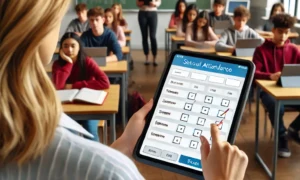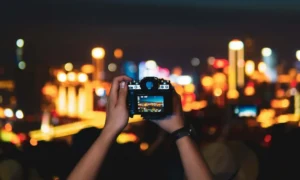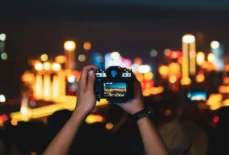The world of augmented reality (AR) is growing rapidly, with more and more businesses incorporating it into their marketing strategies. One tool that is commonly used to access WebAR with (QR) code. QR codes are a type of matrix barcode that can be scanned with a smartphone or tablet to quickly and easily access information or experiences. In this blog post, we will explore how QR codes are used to access augmented reality experiences and how you can use them to enhance your own marketing efforts.
What is Augmented Reality?
Augmented reality is a technology that overlays digital information on top of the physical world. It allows users to interact with digital content in a way that feels natural and seamless. AR experiences can be accessed through a variety of devices, including smartphones, tablets, and dedicated AR glasses.
AR is already being used in a variety of industries, from gaming and entertainment to healthcare and education. For example, some museums are using AR to provide interactive exhibits that bring historical artifacts to life, while retailers are using it to create virtual try-on experiences for customers.
What is a QR Code?
A QR code is a type of matrix barcode that can be scanned with a smartphone or tablet to quickly and easily access information or experiences. QR codes were first invented in 1994 by a Japanese company called Denso Wave, and they have since become a ubiquitous part of our daily lives.
QR codes consist of black and white squares arranged on a grid, with a larger square in the corners. When a smartphone or tablet scans the code, it reads the information encoded in the squares and displays the corresponding content.
How are QR Codes Used for Augmented Reality?
QR codes are often used to access augmented reality experiences because they provide a quick and easy way to connect users to digital content. To access an AR experience using a QR code, users simply need to scan the code with their smartphone or tablet using a dedicated QR code scanning app.
Once the code is scanned, the user is directed to a webpage or app that displays the AR experience. This can include anything from a virtual try-on experience for a product to an interactive game or educational experience.
QR codes can be used to access AR experiences in a variety of contexts. For example, they can be printed on product packaging or in-store displays to provide customers with additional information or experiences. They can also be used in marketing materials such as posters or flyers to promote events or products.
Examples of QR Code Augmented Reality Experiences
There are many examples of QR code augmented reality experiences that have been created by businesses and organizations. Here are just a few:
-
Pepsi Max AR Billboard
In 2014, Pepsi Max created an augmented reality billboard in London that allowed passersby to play a game using their smartphones. The billboard featured a QR code that users could scan to access the game, which involved dodging virtual obstacles and collecting points.
-
LEGO AR Catalog
LEGO has created an augmented reality catalog that allows users to see what a completed LEGO set will look like in 3D. Users simply need to scan the QR code on the product packaging to access the AR experience.
-
National Geographic AR Magazine
National Geographic has created an augmented reality magazine that allows readers to access additional content and experiences through QR codes. For example, readers can scan a QR code to see a 3D model of a dinosaur or to watch a video about a particular topic.
How to Create a QR Code Augmented Reality Experience
Creating a QR code augmented reality experience is easier than you might think. Here are the basic steps:
- Choose an AR platform: There are many AR platforms available, each with its own strengths and weaknesses. Some popular platforms include ARKit, ARCore, and Vuforia.
- Create the AR Experience: Once you have chosen an AR platform, you can begin creating your AR experience. This can involve designing 3D models, animations, or interactive elements that will be overlaid on the physical world.
- Generate the QR Code: Once your AR experience is complete, you can generate a QR code that will allow users to access it. There are many QR code generators available online, and many AR platforms also include QR code generation tools.
- Test and Refine: Before launching your QR code augmented reality experience, it is important to test it thoroughly to ensure that it works as intended. You may need to make adjustments or refinements to the experience based on user feedback.
- Launch and Promote: Once your QR code augmented reality experience is ready, you can launch it and promote it through a variety of channels, including social media, email marketing, and in-store displays.
Tips for Creating Effective QR Code Augmented Reality Experiences
Creating a successful QR code augmented reality experience requires careful planning and execution. Here are some tips to keep in mind:
- Keep it Simple: A QR code augmented reality experience should be easy and intuitive to use. Avoid creating experiences that are overly complex or confusing.
- Focus on User Experience: The user experience should be at the center of your QR code augmented reality experience. Make sure that the experience is engaging and enjoyable for users.
- Provide Value: The experience should provide value to users, whether it is in the form of entertainment, education, or information.
- Integrate with Marketing Strategy: A QR code augmented reality experience should be integrated into your overall marketing strategy to ensure that it reaches your target audience effectively.
- Test and Refine: It is important to test your QR code augmented reality experience thoroughly and make adjustments based on user feedback to ensure that it is successful.
Conclusion
QR codes are a powerful tool for accessing augmented reality experiences, providing a quick and easy way for users to connect with digital content. By creating effective QR code augmented reality experiences, businesses and organizations can engage with their audiences in new and innovative ways, providing value and enhancing the user experience. With the continued growth of augmented reality technology, QR codes are sure to play an important role in the future of marketing and beyond.























































